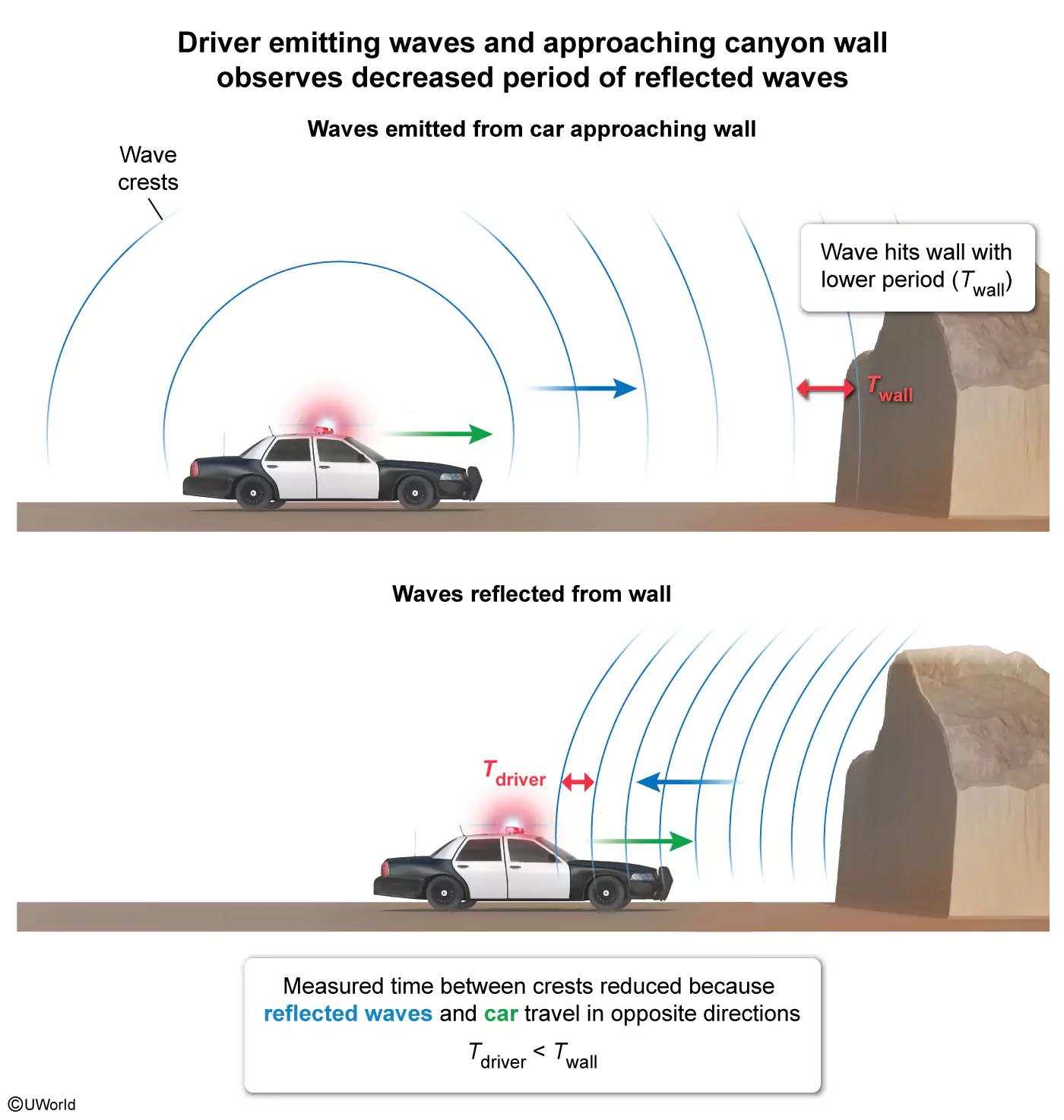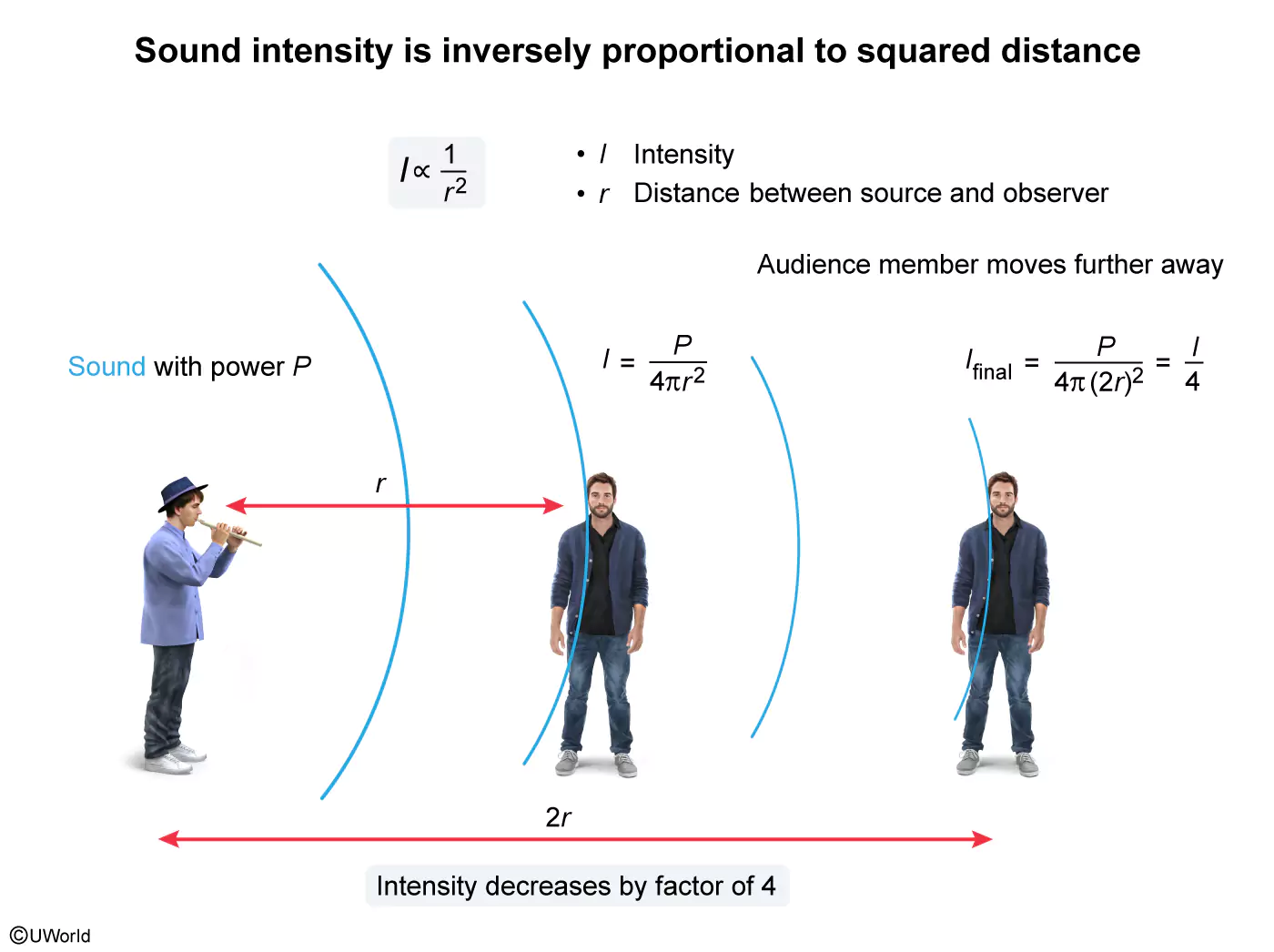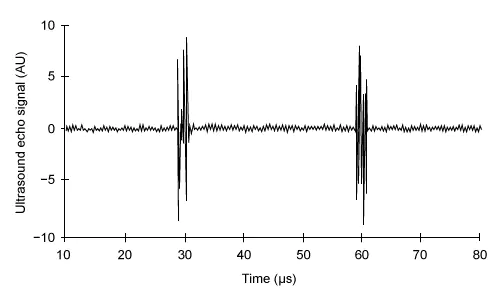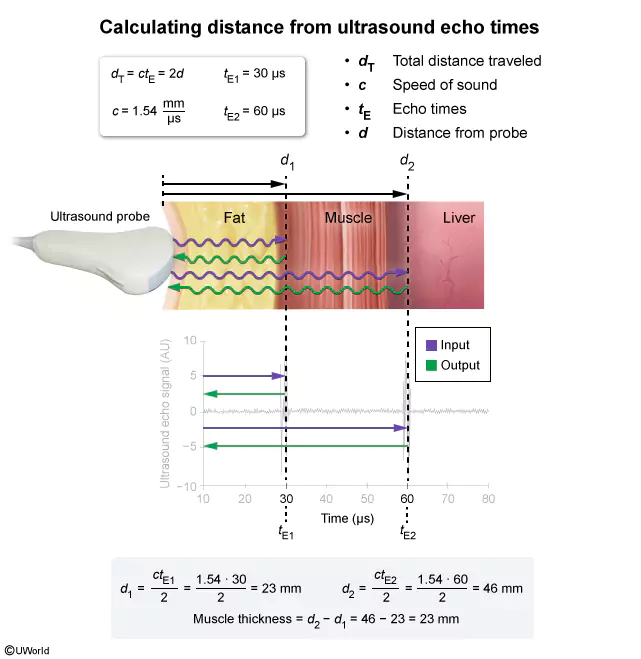MCAT® Physics
Topics, Practice Questions, and Study Strategies

Physics makes up 25% of the Chemical and Physical Foundations of Biological Systems section of the MCAT. This equates to roughly 15 questions, or 33 points out of the section’s possible 132. So while not tested as heavily as disciplines like chemistry, biology, and psychology, physics makes up a high enough percentage to significantly impact your MCAT score. To help you prepare, we’ll outline the topics you may encounter on your exam and provide free sample physics questions.
MCAT Physics Topics
Physics on the MCAT is outlined in the AAMC’s Foundational Concepts 4 and 5. The topics may appear difficult at first glance, but they reflect what you should have learned in a standard two-semester sequence of introductory physics at your university. In medical school, students use the core principles of physics to understand how the respiratory, cardiovascular, and neurological systems function in health and disease.
Foundational Concept 4
The following are physics topics related to translational motion, forces, work, energy, and equilibrium in living systems.
- Translational Motion
- Units and dimensions
- Vectors, components
- Vector addition
- Speed, velocity (average and instantaneous)
- Acceleration
- Equilibrium
- Vector analysis of forces acting on a point object
- Torques, lever arms
- Energy of Point Object Systems
- Kinetic Energy
- Potential Energy
- Conservation of energy
- Power, units
- Force
- Newton’s First Law, inertia
- Newton’s Second Law
- Newton’s Third Law, forces equal and opposite
- Friction, static and kinetic
- Center of mass
- Work
- Work done by a constant force
- Mechanical advantage
- Work Kinetic Energy Theorem
- Conservative forces
- Periodic Motion
- Amplitude, frequency, phase
- Transverse and longitudinal waves: wavelength and propagation speed
- Fluids
- Density, specific gravity
- Buoyancy, Archimedes’ Principle
- Hydrostatic pressure, Pascal’s Law
- Viscosity: Poiseuille Flow
- Continuity equation
- Concept of turbulence at high velocities
- Surface tension
- Bernoilli’s equation
- Venturi effect, pitot tube
- Gas Phase (includes general chemistry)
- Absolute temperature, K, Kelvin scale
- Pressure, simple mercury barometer
- Molar volume at 0°C and 1 atm = 22.4L/mol
- Ideal Gas Law, Boyle’s Law, Charles’ Law, Avogadro’s Law
- Kinetic Molecular Theory of Gases, heat capacity at constant volume and pressure, Boltzmann’s Constant
- Deviation of real gas behavior from Ideal Gas Law, qualitative and quantitative (Van der Waals’ Equation)
- Partial pressure, mole fraction
- Dalton’s Law relating partial pressure to composition
- Circuit Elements
- Current, sign conventions, units
- Electromotive force, voltage
- Resistance, Ohm’s Law, resistors in series or parallel, resistivity
- Capacitance, parallel plate capacitor, energy of charged capacitor, capacitors in series or parallel, dielectrics
- Conductivity, metallic, electrolytic
- Meters
- Electrostatics
- Charge, conductors, charge conservation
- Insulators
- Coulomb’s Law
- Electric field E, field lines, field due to charge distribution
- Electrostatic energy, electric potential at a point in space
- Magnetism
- Definition of magnetic field B
- Motion of charged particles in magnetic fields, Lorentz force
- Geometrical Optics
- Reflection from plane surface: angle of incidence equals angle of reflection
- Refraction, refractive index n, Snell’s Law
- Dispersion, change of index of refraction with wavelength
- Conditions for total internal reflection
- Spherical mirrors, center of curvature, focal length, real and virtual images
- Thin lenses, converging and diverging lenses, lens strength, diopters
- Combination of lenses
- Lens aberration
- Optical instruments including the human eye
- Light, Electromagnetic Radiation
- Interference, Young’s double-slit experiment
- Thin films, diffraction grating, single-slit diffraction
- Other diffraction phenomena, X-ray diffraction
- Polarization of light, linear and circular
- Properties of electromagnetic radiation, velocity equals constant c, electromagnetic radiation consists of perpendicularly oscillating electric and magnetic fields, direction of propagation is perpendicular to both
- Classification of electromagnetic spectrum, photon energy
- Visual spectrum, color
- Sound
- Production of sound
- Relative speed of sound in solids, liquids, and gases
- Intensity of sound, decibel units, log scale
- Attenuation (dampening)
- Doppler Effect
- Pitch
- Resonance in pipes and strings
- Ultrasound
- Shock waves
- Atomic Nucleus (includes general chemistry)
- Atomic number and weight
- Neutrons, protons, isotopes
- Nuclear forces, binding energy
- Radioactive decay, α, β, γ decay, half-life, exponential decay, semi-log plots
- Mass spectrometer
- Mass spectroscopy
- Electronic Structure (includes general chemistry)
- Orbital structure of hydrogen atom, principal quantum number n, electrons per orbital
- Ground state, excited states
- Absorption and emission line spectra
- Use of Pauli Exclusion Principle
- Paramagnetism and diamagnetism
- Conventional notation for electronic structure
- Bohr atom
- Heisenberg Uncertainty Principle
- Effective nuclear charge
- Photoelectric effect
Foundational Concept 5
- Energy changes in chemical reactions: thermochemistry and thermodynamics (includes general chemistry)
- Thermodynamic system, state function
- Zeroth Law, concept of temperature
- First Law, conservation of energy in thermodynamic processes
- PV diagram: work done equals area under or enclosed by curve
- Second Law, entropy as measure of disorder, relative entropy for gas, liquid, and crystal states
- Measurement of heat changes (calorimetry), heat capacity, specific heat
- Heat transfer, conduction, convection, radiation
- Endothermic and exothermic reactions, enthalpy H, standard heats of reaction and formation, Hess’ Law of Heat Summation
- Bond dissociation energy as related to heats of formation
- Free energy: G
- Spontaneous reactions and ΔG°
- Coefficient of expansion
- Heat of fusion and vaporization
- Phase diagram: pressure and temperature
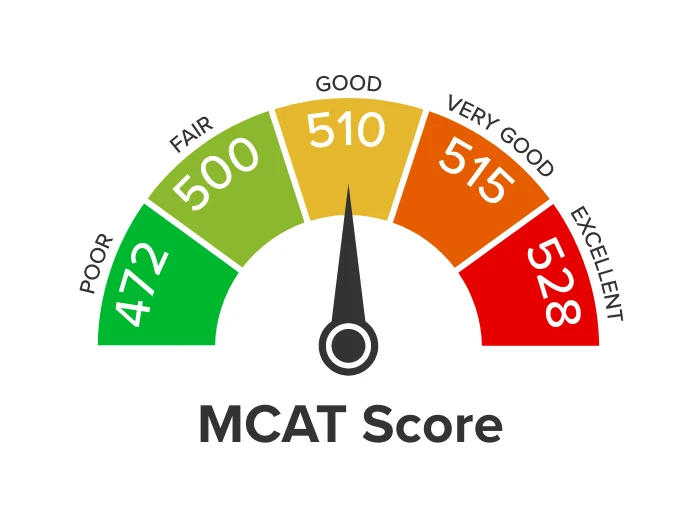
What are the MCAT skills tested on Physics questions?
In the MCAT’s Chemical and Physical Foundations of Biological Systems section, you will be tested on all four of the AAMC’s scientific inquiry and reasoning skills.
Skill 1 requires examinees to:
- Demonstrate their understanding of scientific concepts and principles
- Identify the relationships between closely related concepts
These questions ask you to recognize, identify, recall, or define concepts in the natural, behavioral, and social sciences, and their relation to one another.
Skill 2 requires examinees to:
- Reason about scientific principles, theories, and models
- Analyze and evaluate scientific explanations and predictions
These questions ask you to use scientific knowledge to solve problems in the natural, behavioral, and social sciences.
Skill 3 requires examinees to:
- Demonstrate an understanding of important components of scientific research
- Reason about ethical issues in research
These questions ask you to display your scientific inquiry skills by “doing” science. You must understand scientific methodology and demonstrate your knowledge of the ways natural, behavioral, and social scientists conduct research.
Skill 4 requires examinees to:
- Interpret patterns in data presented in tables, figures, and graphs
- Reason about data and draw conclusions from it
These questions ask you to display your ability to “do” science through data-based and statistical-reasoning skills. You will need to be able to read and interpret results in tables, graphs, and charts, identify patterns in data, and draw conclusions from provided evidence.
However, 80% of the questions are related to skills 1 and 2, meaning most of your physics questions will ask you to:
- Demonstrate your understanding of concepts and principles
- Identify the relationships between closely related concepts
- Reason about principles, theories, and models
- Analyze and evaluate explanations and predictions
The remaining 20% of problems have more to do with research applications and interpreting data, asking you to:
- Demonstrate an understanding of important components of research
- Reason about ethical issues in research
- Interpret patterns in data presented in tables, figures, and graphs
- Reason about data and draw conclusions from it
MCAT Physics Sample Questions
The following MCAT physics questions and explanations were pulled from our MCAT QBank to highlight how UWorld can help you raise your score. Read each practice question carefully and submit your answers to view detailed rationales.
A car drives at a constant speed toward the wall of a canyon while sounding its horn at a particular frequency. The sound waves from the horn reflect from the canyon wall and return to the car as it continues moving toward the wall. What happens to the period of the reflected waves observed by the driver of the car?
| A. The period of the reflected waves will remain the same because the returning waves travel the same speed as the outgoing waves. | |
| B. The period of the reflected waves will remain the same because the speed of the car is constant. | |
| C. The period of the reflected waves will decrease because the observer moves in the opposite direction from the waves. | |
| D. The period of the reflected waves will decrease because the speed of the returning waves is increased. |
According to the Doppler effect, the wave period measured by an observer depends on the relative motion of the source creating the wave (eg, sound) and the observer.
For example, when the observer and a source emitting waves of period T0 move toward each other, the observed wave period Tobs is smaller than T0. A smaller period is observed because the source has moved closer to the observer and the measured time between emitted wave crests is reduced. Conversely, when the source and the observer move away from each other, Tobs is greater than T0 because the waves emitted from the source travel a longer distance to the observer.
In this question, the car emits sound waves with a frequency f0 = 1/T0 as it approaches the canyon wall. The Doppler effect implies that the sound waves hit the wall with a period Twall less than T0:
The sound waves are then reflected from the wall toward the car. Consequently, the wall acts as the source and the driver as the observer. Because the driver is moving toward the wall (ie, in the opposite direction from the waves), the observed period Tdriver is further reduced:
Therefore, the most accurate description of the period is Choice C.
(Choice A) Emitted or reflected sound waves travel in air at the same speed, but the relative motion of the source and observer yields a smaller period.
(Choice B) The speed of the car is constant, but because the car is moving relative to the wave, the driver observes a smaller period.
(Choice D) The period of the reflected waves decreases due to the Doppler effect, not because the wave speed increases.
Educational objective:
The period of an observed wave changes based on the relative motion between the source and the observer. When source and observer move toward each other, wave period is decreased.
An audience member experiences sound of intensity I as an orchestra member plays a flute. If the audience member moves farther back so that the distance from the flute player is doubled, then I would:
| A. decrease by a factor of 4. | |
| B. decrease by a factor of 2. | |
| C. remain the same. | |
| D. increase by a factor of 2. |
The loudness of a sound wave is measured in terms of the wave's intensity. The intensity I of a sound wave is equal to the energy E carried by the sound wave per unit area A per unit time t :
Because sound waves move in three dimensions, the intensity can be expressed in terms of the power P per A, where A is the surface area of a sphere with radius r :
Hence:
Consequently, intensity is directly proportional to P and inversely proportional to the square of the distance r from the sound source:
In this question, the audience member initially experiences an intensity Iinital at a distance r from the source:
When the audience member moves farther away, the power of the sound remains the same but the distance is doubled. Hence, the final intensity equals:
Therefore, the intensity of the sound decreases by a factor of 4.
(Choice B) Intensity would decrease by a factor of 2 if it was inversely proportional to r, but it is inversely proportional to r2.
(Choice C) The energy of the sound is unchanged, but intensity also depends on the distance from the source.
(Choice D) Intensity can only decrease as the distance between source and observer increases.
Educational objective:
Sound intensity equals the rate at which energy is delivered per unit surface area, and is inversely proportional to the square of the distance from the source.
An ultrasound probe recorded the echo data shown in the figure above, representing the time required for the ultrasound signal to travel through the body and reflect back to the probe. The ultrasound signal passed through subcutaneous fat, muscle, and liver, resulting in echoes at 30 μs and 60 μs from the tissue interfaces. What is the thickness of the muscle tissue that the ultrasound wave traveled through? (Note: Use 1.54 mm/μs for the speed of sound in the body.)
| A. 23 mm | |
| B. 30 mm | |
| C. 46 mm | |
| D. 60 mm |
The total distance dT that the ultrasound signal travels is calculated by multiplying the speed of sound c by the echo time tE:
The ultrasound signal travels from the ultrasound probe to the tissue interface and back to the probe again. Therefore, the distance d from the probe to the tissue interface is half the total distance traveled:
In this question, the first echo is received 30 μs after the pulse is transmitted into the body. This echo is generated from the ultrasound signal reflecting off the interface between the fat and muscle tissues. Hence, the distance from the probe to the fat/muscle interface d1 is calculated as:
Similarly, the distance from the probe to the muscle/liver interface d2 depends on the second echo time (60 μs) and is calculated as:
Therefore, the thickness TM of the muscle layer is the difference of these two distances:
(Choice B) The first echo is received by the probe at 30 μs, but the echo time must be multiplied by the speed of sound to calculate the total distance traveled.
(Choice C) 46 mm is twice the muscle thickness. The distance between the probe and the tissue interfaces depends on half the time for the ultrasound signal to be reflected back to the probe.
(Choice D) The second echo is received by the probe at 60 μs, but the echo time must be multiplied by the speed of sound to calculate the total distance traveled.
Educational objective:
Given the speed of sound in the body, the time required for an ultrasound signal to be reflected from a tissue interface can be used to calculate distance. The distance from the probe to the tissue interface is half the total round-trip distance.
Physics Tips and Strategies
The best way to study physics for the MCAT is to review the basics behind each foundational concept and practice with physics sample questions. This learn-by-doing approach reinforces the equations and concepts you’re expected to know for the exam. It is what we offer through the UWorld MCAT question bank. Our detailed explanations for each question, customizable learning tools, and topic-by-topic performance tracking led to us being voted the number one most helpful resource for MCAT prep.

Frequently Asked Questions
What level of physics is on the MCAT?
The vast majority of MCAT physics topics are covered in the standard two-semester sequence of introductory physics courses offered by 4-year degree programs (i.e., Physics I and Physics II).
How do you memorize physics equations for the MCAT?
The best way to remember MCAT physics equations is to apply them within practice questions. This reinforces their applications and will help you see how the variables within similar equations are related.
Are MCAT physics questions hard?
Many aspiring medical students struggle with MCAT physics because it requires a different skill set and knowledge base than topics like biology and chemistry. However, these principles play a significant role in how the body functions and how medical devices operate. The best way to learn is to read and practice.
Is Physics 1 enough for the MCAT?
No, you will be required to understand and apply concepts from Physics 1 and Physics 2 to score well in MCAT physics. For example, you would know Newtonian physics and energy equations from Physics 1, but would not have a thorough understanding of electricity, magnetism, and circuits without taking Physics 2.


